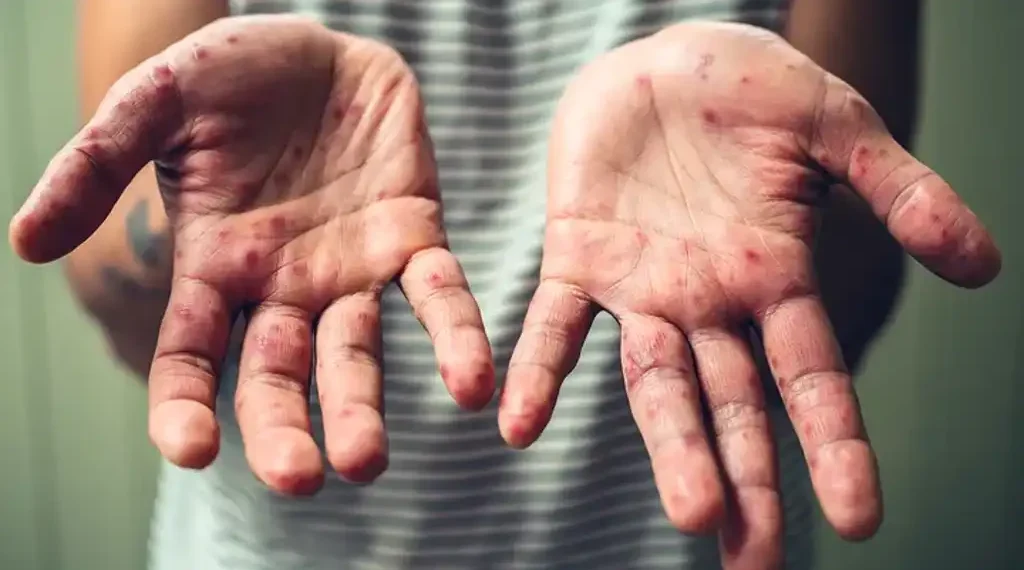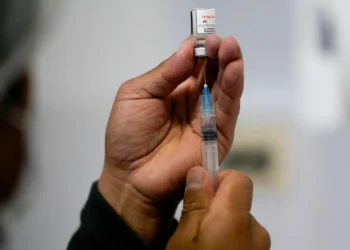Surge in Hand, Foot and Mouth Disease Cases Raises Public Health Concerns Across the U.S.
Writing Time: August 5, 2025, 14:00 EDT
A highly contagious viral illness is spreading in parts of the United States, prompting health alerts and raising concerns about potential severe outcomes, particularly in children.
Recent data from health departments across the country indicate a significant increase in Hand, Foot and Mouth Disease (HFMD) cases. The disease, commonly seen in young children but capable of affecting individuals of any age, is once again drawing the attention of medical experts and public health agencies.
Rising Cases in Multiple Regions
According to the Centers for Disease Control and Prevention (CDC), HFMD is a common viral illness that tends to occur more frequently in warmer months. In Virginia, the Fairfax County Health District issued a public health alert after reporting six HFMD outbreaks earlier this year, predominantly impacting children under the age of 5.
Meanwhile, in the U.S. Virgin Islands, the Department of Health confirmed 189 HFMD cases on the island of St. Thomas, including one suspected fatal case involving a toddler. Investigations are ongoing to determine the exact cause of the child’s death and its possible connection to the illness.
In response to the increasing cases, the Pan American Health Organization (PAHO) issued a March 2025 advisory urging member countries to strengthen prevention and control measures, especially among young children who are more vulnerable to complications.
Symptoms and Transmission of HFMD
HFMD is primarily caused by Coxsackievirus A16 and Enterovirus 71, both of which are highly contagious and easily spread in community settings such as daycare centers, schools, and playgrounds.
Dr. Marc Siegel, senior medical analyst for Fox News, explained that the disease typically begins with fever, sore throat, and reduced appetite, followed by the development of painful sores inside the mouth and a rash on the hands, feet, and occasionally other body parts. Some newer strains, such as Coxsackie A6, are known to cause more severe skin rashes and nail loss in both children and adults.
“HFMD is most contagious during the first week of symptoms but can continue to be spread for several weeks,” Dr. Siegel said in an interview with Fox News Digital.
The virus is spread through direct contact with nasal secretions, saliva, fluid from blisters, stool, or contaminated surfaces, making hygiene a critical component of prevention.
Current Trends and Seasonal Patterns
Dr. Tina Q. Tan, pediatric infectious disease specialist at Ann & Robert H. Lurie Children’s Hospital of Chicago and president of the Infectious Diseases Society of America, noted that HFMD tends to surge in the summer and early fall, consistent with current trends.
“We are seeing more cases at this time,” Dr. Tan told Fox News. “It is a very common infection that is usually mild, but it can occasionally lead to serious complications.”
When to Seek Medical Attention
Although the majority of HFMD cases resolve on their own within 7 to 10 days, Dr. Tan emphasized the importance of monitoring symptoms, especially in young children who may have difficulty staying hydrated due to mouth pain.
“Parents should seek medical help if their child cannot drink fluids, has reduced urination, shows signs of worsening symptoms, or exhibits any changes in mental status,” she advised.
Rare but serious complications include:
- Dehydration
- Nail shedding
- Viral meningitis
- Encephalitis
- Paralysis
The CDC also advises pregnant women who contract HFMD to consult with a healthcare provider, as infections during pregnancy may carry added risks.
Treatment Options
There is no specific antiviral treatment for HFMD. Management generally involves:
- Over-the-counter medications (such as acetaminophen or ibuprofen) to reduce fever and relieve pain
- Plenty of fluids to prevent dehydration
- Rest to support the immune system
Antibiotics are not effective, as the disease is caused by a virus.
Prevention Measures and Public Health Guidance
To limit the spread of HFMD, both Dr. Tan and the CDC strongly recommend the following hygiene practices:
- Frequent handwashing with soap and water, especially after changing diapers or using the bathroom
- Disinfecting surfaces like toys, countertops, and doorknobs regularly
- Avoiding close contact such as hugging, kissing, or sharing cups and utensils during outbreaks
Children can typically return to school or daycare once they:
- Are fever-free
- Feel well enough to participate in normal activities
- Do not have open or oozing lesions
- Are able to eat and drink comfortably
No Vaccine Available in the U.S.
While vaccines against Enterovirus 71 (one of the HFMD-causing viruses) exist in some countries such as China, there is currently no FDA-approved vaccine for HFMD available in the United States.
Researchers continue to monitor new virus strains and assess the need for future immunization strategies, particularly as more severe or atypical cases are being reported.
Final Thoughts
As HFMD cases rise in several U.S. jurisdictions, health experts encourage parents, educators, and caregivers to remain vigilant, practice good hygiene, and seek medical attention when symptoms become severe or unusual.
Although most cases are mild and self-limiting, the potential for serious complications—particularly among children—makes awareness and prevention crucial during seasonal outbreaks.
For updated information and guidance, visit the CDC’s official Hand, Foot and Mouth Disease resource page:
This article was rewritten by JournosNews.com based on verified reporting from trusted sources. The content has been independently reviewed, fact-checked, and edited for accuracy, neutrality, tone, and global readability in accordance with Google News and AdSense standards.
All opinions, quotes, or statements from contributors, experts, or sourced organizations do not necessarily reflect the views of JournosNews.com. JournosNews.com maintains full editorial independence from any external funders, sponsors, or organizations.
Stay informed with JournosNews.com — your trusted source for verified global reporting and in-depth analysis. Follow us on Google News, BlueSky, and X for real-time updates.












